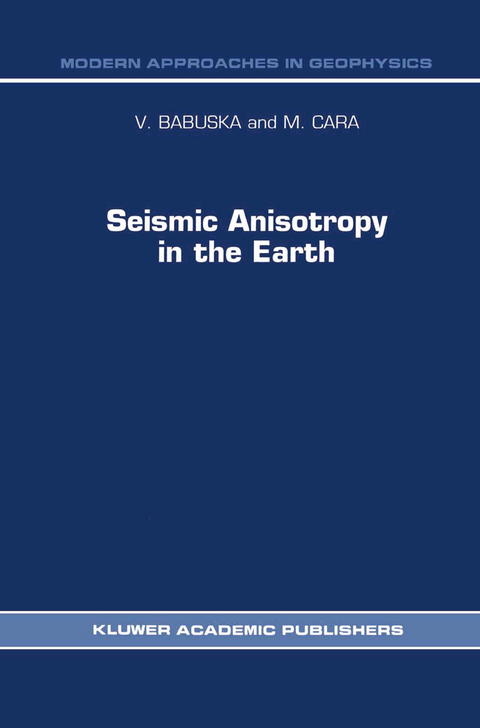
Seismic Anisotropy in the Earth
Springer (Verlag)
9789401055963 (ISBN)
It is simply that, so far, computerswere not largeenough tointegrate the anisotropy parameter". Changingisotropic glassesfor anisotropic ones permits us to obtain betterand more realistic seismic modelsofthe Earth's interior, but, maybe more importantly, it has, for a seismologist, the farreaching consequenceofsteppinginto the fIeld ofgeodynamics.
1 Introduction.- 2 Seismic-Wave Propagation in Anisotropic Media.- 2.1 A simple anisotropic medium: the stack of isotropic layers.- 2.2 Elastic tensors in general anisotropic media.- 2.3 Plane waves in homogeneous anisotropic media.- 2.4 Body waves in heterogeneous anisotropic media.- 2.5 Surface waves in anisotropic media.- 3 Elastic Anisotropy of Rock-Forming Minerals and Polycrystalline RockS.- 3.1 Methods of investigation.- 3.2 Velocity anisotropy in rock-forming minerals.- 3.3 Elastic anisotropy of polycrystalline aggregates.- 3.4 Crustal rocks.- 3.5 Uppermost mantle rocks.- 4 Interpretation of Seismic Data in Terms of Anisotropy.- 4.1 Trade-off between seismic anisotropy and heterogeneity.- 4.2 Seismic anisotropy and inverse methods.- 4.3 Interpretation of body-wave data.- 4.4 Long-range refraction profiles.- 4.5 Interpretation of surface-wave data.- 5 Anisotropic Structures in the Lithosphere.- 5.1 Oceanic crust.- 5.2 Subcrustal lithosphere under oceans.- 5.3 Subduction zones.- 5.4 Continental crust.- 5.5 Subcrustal lithosphere of continents.- 6 Anisotropy in Deeper Parts of the Earth.- 6.1 Asthenosphere.- 6.2 Seismic anisotropy at greater depths.- 7 Conclusions and Outlook.- 7.1 Possible causes of the observed seismic anisotropy.- 7.2 Outlook.- References.
| Erscheint lt. Verlag | 5.11.2012 |
|---|---|
| Reihe/Serie | Modern Approaches in Geophysics ; 10 |
| Zusatzinfo | VIII, 219 p. |
| Verlagsort | Dordrecht |
| Sprache | englisch |
| Maße | 155 x 235 mm |
| Themenwelt | Sachbuch/Ratgeber ► Natur / Technik ► Natur / Ökologie |
| Naturwissenschaften ► Geowissenschaften ► Geologie | |
| Naturwissenschaften ► Geowissenschaften ► Geophysik | |
| ISBN-13 | 9789401055963 / 9789401055963 |
| Zustand | Neuware |
| Informationen gemäß Produktsicherheitsverordnung (GPSR) | |
| Haben Sie eine Frage zum Produkt? |
aus dem Bereich


